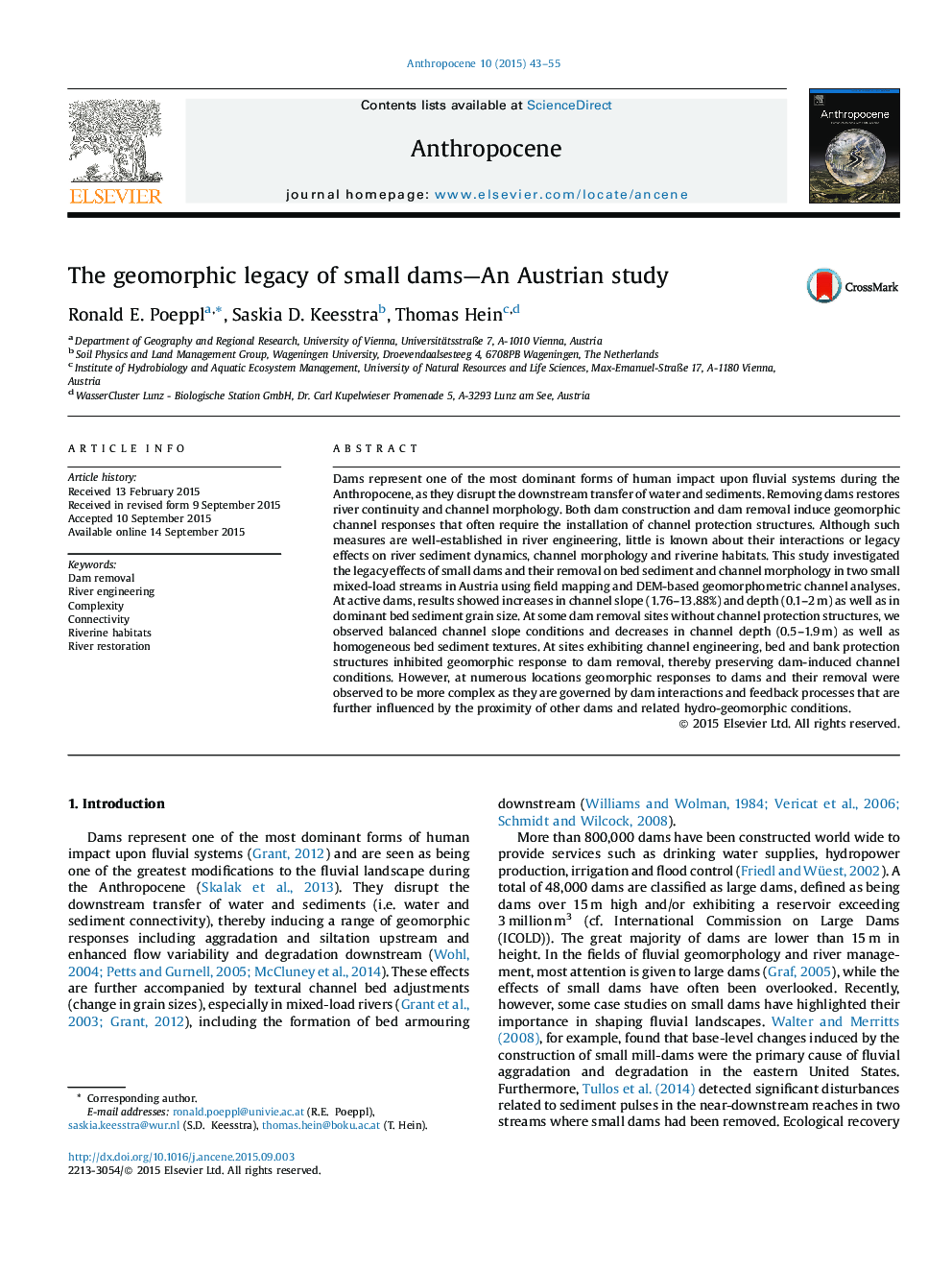| Article ID | Journal | Published Year | Pages | File Type |
|---|---|---|---|---|
| 4461860 | Anthropocene | 2015 | 13 Pages |
Dams represent one of the most dominant forms of human impact upon fluvial systems during the Anthropocene, as they disrupt the downstream transfer of water and sediments. Removing dams restores river continuity and channel morphology. Both dam construction and dam removal induce geomorphic channel responses that often require the installation of channel protection structures. Although such measures are well-established in river engineering, little is known about their interactions or legacy effects on river sediment dynamics, channel morphology and riverine habitats. This study investigated the legacy effects of small dams and their removal on bed sediment and channel morphology in two small mixed-load streams in Austria using field mapping and DEM-based geomorphometric channel analyses. At active dams, results showed increases in channel slope (1.76–13.88%) and depth (0.1–2 m) as well as in dominant bed sediment grain size. At some dam removal sites without channel protection structures, we observed balanced channel slope conditions and decreases in channel depth (0.5–1.9 m) as well as homogeneous bed sediment textures. At sites exhibiting channel engineering, bed and bank protection structures inhibited geomorphic response to dam removal, thereby preserving dam-induced channel conditions. However, at numerous locations geomorphic responses to dams and their removal were observed to be more complex as they are governed by dam interactions and feedback processes that are further influenced by the proximity of other dams and related hydro-geomorphic conditions.
